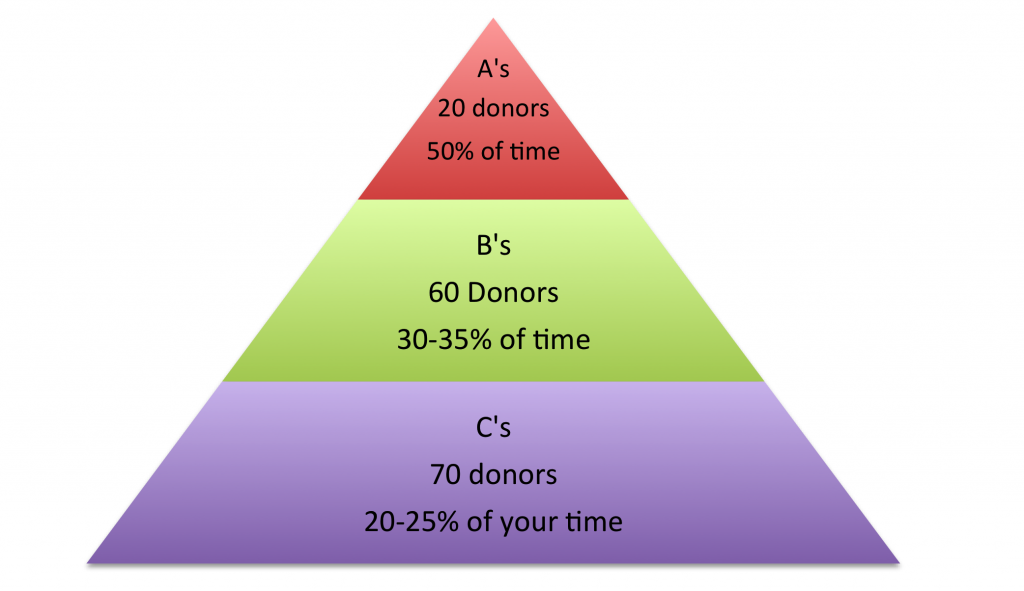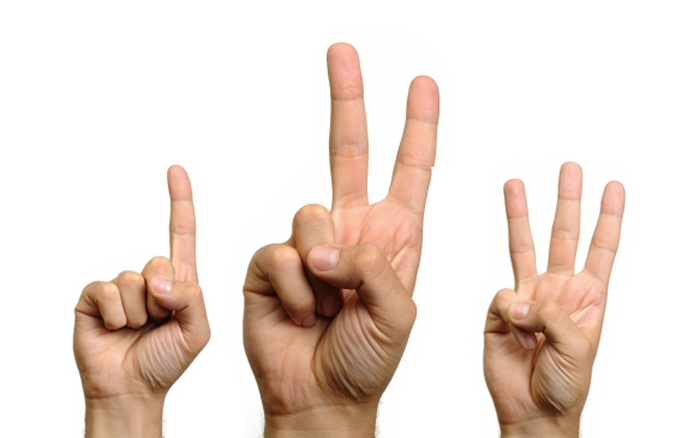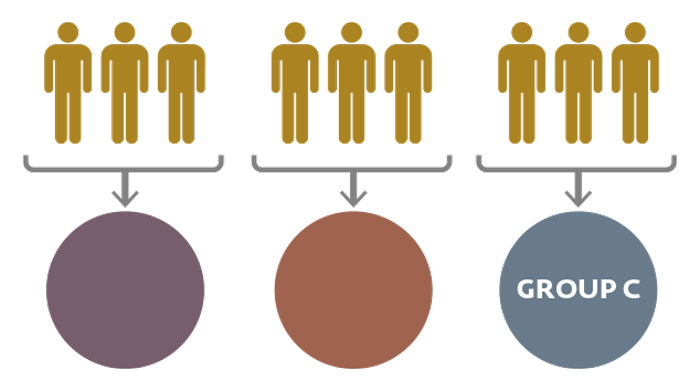As you may know, Richard and I are constantly writing about how you should be allocating your time with your major gift caseload. We have a lot of energy around this because we find many MGOs who forget to focus on where the majority of their revenue comes from.
It comes from “A” level donors. And, even within the “A” donors there are 2-3 donors who have the capacity to give six, seven and eight figure gifts to your organization. So, it’s really, really important to spend at least 50% of your time with these donors. And for your “B” level donors, we want you to spend between 30-35% of your time with them.
This is why we believe it’s really important to tier your caseload, A, B and C levels. I’ve created a chart to show you how to think about it:

But, here’s the deal: you can’t forget about the “C” donors. I bring this up because I was recently in an all day meeting with some really effective MGOs. They had all these wonderful reports on their “A” level donors. They also had their “top 10” donors and all their strategies in place.
Really good stuff.
However, by the time our meeting was over we never got around to the “C” donors. Then I began to think, “These poor C’s…we can’t forget they need attention too. I mean five years from now, these folks could be in our “A” tier funding our next massive vision.”
And I think that is the key point.
Yes, you need to focus on where you have the most leverage and opportunity NOW, but you cannot forget about the long-term. That is what many of the “C” level donors represent. Many of them, with the right care and nurturing, will be significantly funding your programs and projects of tomorrow and you cannot forget them.
Here are some things you can do to make sure that doesn’t happen.
- Meet with them—Many times MGOs only create meetings with their A and B level donors. Richard and I firmly believe you need to meet with your “C” level donors at least once per year. A face-to-face meeting ensures you will not forget them. And, it may inspire a donor to deepen his or her commitment because no other organization is doing this.
- Send personal e-mails and call them–This actually takes very little time, and if you do it right it will have a positive effect on the relationship. Now, I’m not talking about update e-mails or newsletters. I’m talking about personal e-mails that surprise and create a bond to the organization.
- Understand who they are—A good MGO knows her A level donors really well. A great MGO knows all of her donors really well.
- Integrate their communication with direct-response—Too many times we see MGOs pulling their caseload donors out of the direct-response programs. This is a huge mistake. Most revenue from “C” level donors is sourced from mail, e-mail or other forms of direct-response marketing. If you don’t integrate what you are doing on a personal level with the direct-response program, you will definitely see revenue rapidly decrease.
Focusing the right amount of time and energy on the tiered levels of your caseload is the right strategic approach. But, stepping back and reviewing how you are really allocating your time vs. what is the right amount of time on each tier is imperative to success, both in the short-term and the long-term.
And remember…don’t forget your “C’s.” You’ll be rewarded for it someday.
Jeff


![Energy renewal: A woman meditating next to her laptop. [Stressed? Tired? Feeling Burnt Out? Here's How to Renew Your Energy]](https://veritusgroup.com/wp-content/uploads/2023/01/AdobeStock_483785997-scaled.jpeg)



0 Comments